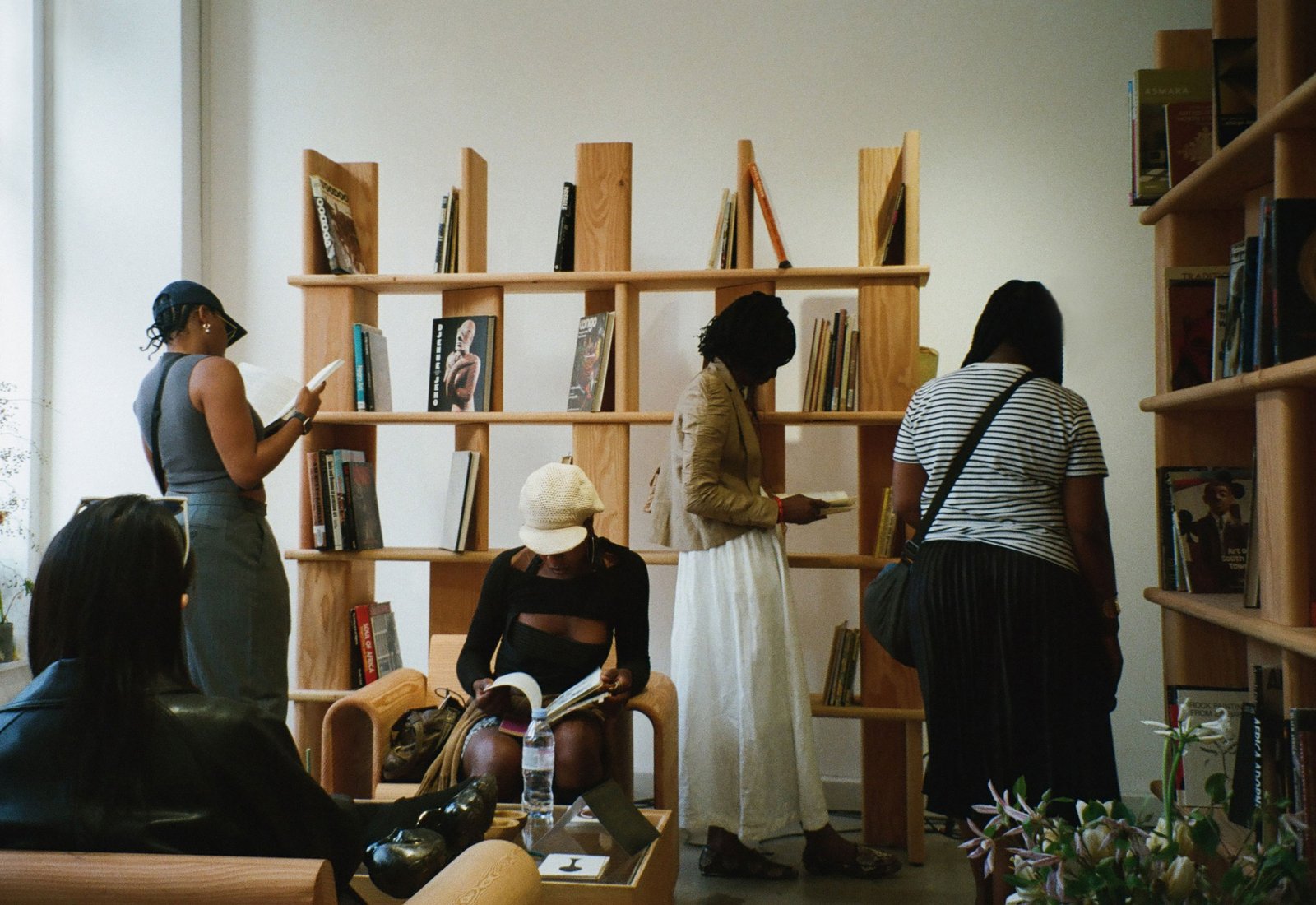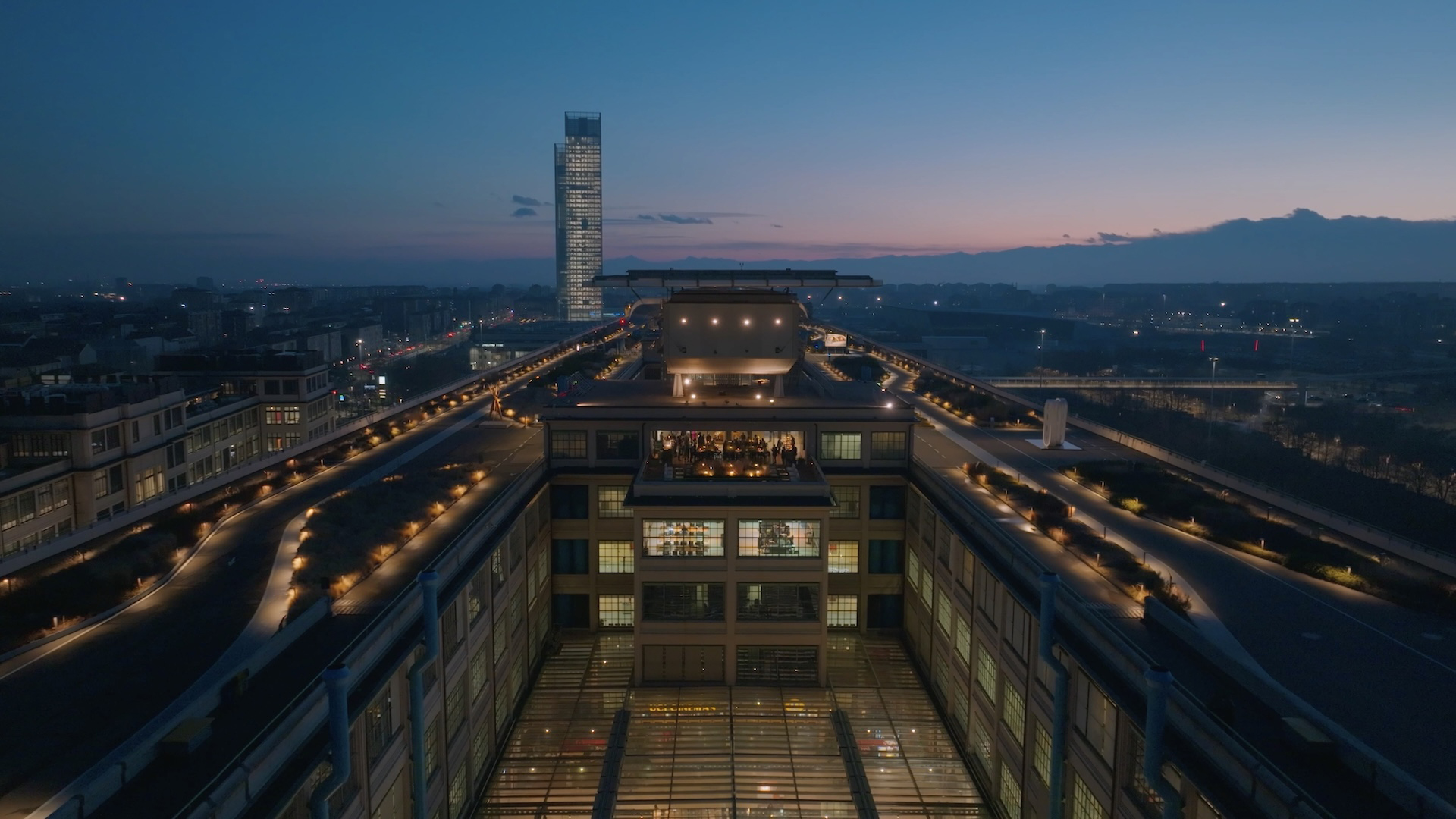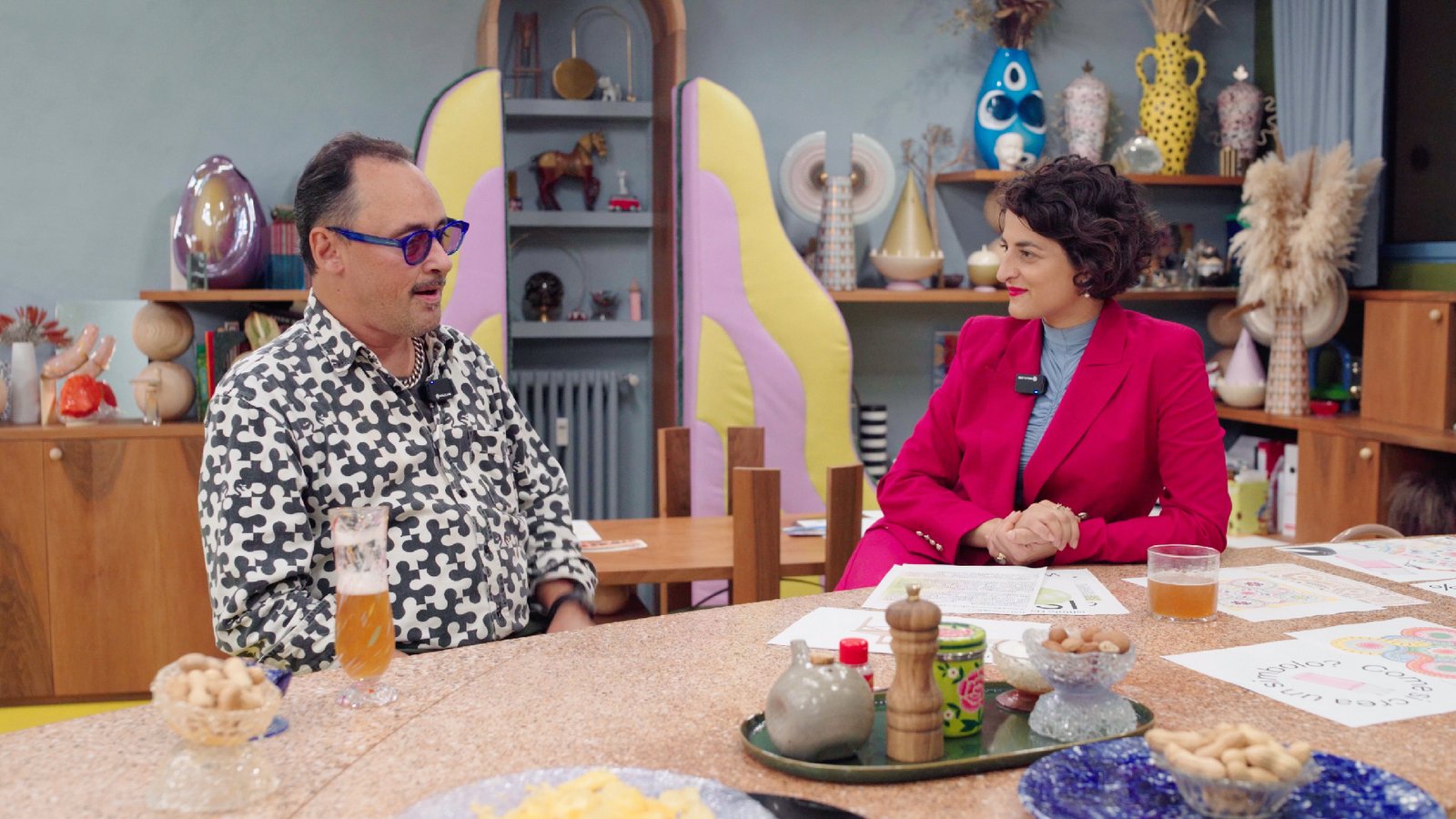
Seed Archives: Christian Cassiel’s Diasporic Library Connecting London, Africa, and the Caribbean
In Tottenham, Seed Archives redefines the idea of an archive: a cultural collection from Africa and the Caribbean meant to be lived, and passed on. An independent project by Christian Cassiel that restores dignity and presence to diasporic memory.
In Tottenham, North London, tucked into a building on the high road, is Seed Archives: a library, an object collection, and a radical offering to diasporic memory. Founded by artist and curator Christian Cassiel, Seed is not a place of passive storage, but one of active reawakening. Here, rare books and artefacts from Africa and the Caribbean are not sealed behind glass or locked in cabinets. They are placed within reach. Meant to be touched, held, read beside, lived with.
For diasporic people, this gesture is profound.
Many of us have come up against the closed doors of institutional libraries, where the knowledge of our histories, when it exists, is often fragmented, decontextualized, or buried under layers of academic detachment. We encounter our ancestors in footnotes. Our cultural artefacts are catalogued with numbers, removed from use and language. The archive, in these settings, is rendered archaic: a repository of old knowledge, not a living pulse. Seed Archives counters this. It reframes the archive not as a museum of decay but as a practice of care. Its contents are curated not for prestige or preservation alone, but for connection. Cassiel’s approach honours the emotional and everyday significance of cultural objects, refusing the colonial taxonomy that sees them as static or obsolete. In Seed, a carved stool or a hand-bound book is not just a study subject. it’s an ancestor, a teacher, a memory you didn’t know you needed.
This is the brilliance of Seed: it gives diasporans access not only to information, but to relationships, with self, with lineage, with aesthetic memory. Visitors don’t just learn; they remember. They feel. And in doing so, they begin to reimagine the archive as a place of return rather than removal.
Seed is entirely self-funded. It operates outside the prestige economy of cultural institutions. Its survival depends on care: of the founder, of visitors, of those who donate, buy from its shop, or simply share its name. It is humble, yes, but radical in its clarity. It asks: What if an archive loved you back?
In a world that often reduces culture to citation or consumption, Seed Archives offers another way. It reminds us that knowledge is not only to be kept, it is to be held, breathed, and passed on.
On Origins and Intentions
What was the moment or experience that first seeded the idea for Seed Archives?
I would say it was a few experiences and conversations that Seed as an idea began to grow. It started at home with the collection of bought and found objects that lined my window. Once upon a time, when I used to have house parties, my room was a place where guests gathered and were drawn to these artefacts of various forms, materials and functions that people enjoyed discussing and speculating the origins of. The name itself arrived when I was reading a book called ‘Zen and the art of motorcycle maintenance’ . There was a moment when everything the author had been thinking about over the years began to make sense, he referred to it as the ‘Seed crystal’ , the crystallization of all of his ideas.
So I went with Seed, which to me means to make sense of things
How did your own relationship with institutional archives inform how you shaped Seed?
It’s possible that the reason why Seed works so well is that I never had any relationship or experience with institutional archives. There were no preconceived ideas of what an archive could or could not be, so I just went with the flow and things grew organically, the space naturally responded to people who visited over time. The space had always been intended to be open and evolving. I think focusing on the books was the perfect natural progression because it gave people context to the objects within the collection and opened up conversation around them.
On Reframing the Archive
Seed invites people to touch, handle, and sit with objects— a gesture that feels radical in archival practice. Why was this important to you?
When I was a child I always found it frustrating if there was something that I was fascinated by that I wasn’t allowed to touch. I definitely did it anyway, which got me into trouble sometimes, to be honest it’s a habit I haven't really grown out of. Do not put a sign telling me not to touch it, because I will. I think there's a lot of people that share that same frustration and are conditioned to be overly tentative when dealing with old things, usually our own heritage held by institutions with a problematic history of how they came to be in possession of those things anyway.
It's not even just touching objects, it's like we have to behave a certain way around them too. I want Seed to be like the antidote, just touch everything and experience it to the fullest extent, it is all going to turn to dust eventually.
How do you see Seed challenging dominant ideas of what an archive should be?
I think it shows that in an archive there doesn't need to be order, it doesn’t need to be tidy, it doesn't have to be quiet and or easy to find things. Which I know sounds like an archivist's worst nightmare but people need to be able to experience things in different ways, Seed can be a place of solitude or chaos, it can be whatever you need it to be.
In your view, what does it mean to archive with care rather than control?
It means to give people the space to experience things in their own way. I don’t always have the time to accommodate people personally at Seed, many times I leave people to research and they let themselves out when they are ready. Trust is also a big part of Seed, it becomes like a home you want to return to. Sometimes people want some guidance and suggestions, and I can be there if they need, but freedom is most important.
On Diaspora and Access
What kinds of relationships do diasporic visitors form with the objects and texts in Seed?
I find a lot of people reminiscing of home when they visit seed, whether they find an object that their mother family has, usually something domestic, like a stool or a bowl, something that connects them back to their roots.
Scent plays a large role at Seed, a visitor once told me it smelled like her aunties home in Ethiopia. Imagine this humble room in Tottenham, bringing them all the way across the continent back to Ethiopia, it brought me a lot of joy to hear that.
Have you witnessed any moments of reconnection or remembering that affirmed the need for a space like this?
I curated a pop up library earlier this year and there was a moment I vividly recall when three young women sat at the table and instantly up picked books that related directly to their people, it was like Ashanti, Yoruba and Igbo, they had access to books that they could intimately relate to and they were excited to share and discuss each other's cultures.
How do you imagine Seed responding to diasporic longing for ancestral or cultural knowledge?
I think it’s important for Seed to continue to grow the collection of books and objects but be even more intentional about how the books relate to objects within the collection and also make sure I'm including underrepresented countries and peoples so everyone can see themselves within the archive.
On Objecthood and Storytelling
What role do everyday or domestic objects play in the story Seed is telling?
Seating is central in the way people experience Seed. It's such a small space but the seat or corner you decide to place yourself within can really change the way you perceive and digest information. It also affects the way people interact with each other, bringing them together or further away if that's what they want.
How do you approach sourcing and selecting the items in the collection?
I don’t really have a process of selecting, it's mostly objects or material that just resonate with me or I find to be of technical interest that researchers may find useful. Sometimes I just enjoy gathering beautiful things.
Is there an object in the archive that you return to again and again?
There's this Igbo chieftain stool that I've been really enjoying recently. It's so sturdy and intricately carved, and also very comfortable to sit on.
On Practice and Process
What does a typical day look like at Seed?
Mostly staring out the window and watching all the fascinating characters of Tottenham pass by. Then I spend most of the day flicking through newly arrived books and rabbit holes of research, usually nothing related to what I actually should be researching though.
How do you balance the roles of artist, curator, and archivist in this space?
I think I'm only just starting to figure that out honestly, the interconnections of my different practices have been much more seamless recently and I'm excited to share the fruits of that soon.
How has the project shaped or shifted your own creative or research practice?
I’ve been very fortunate to be able to observe how people respond to space and objects over time and it has granted me clarity of how I would like to continue to cultivate Seed. Recently, I was fortunate to spend some time in Gambia, Senegal and Mali, and there are concepts I learned during that journey I would like to explore how to implement in environments of learning and cultural exchange here.
 Reflective reading space at staffordshire street gallery, collab with designer Nabisere Nicole
Reflective reading space at staffordshire street gallery, collab with designer Nabisere Nicole
On Futures and Fractals
Where do you see Seed going in the next few years? Is growth something you’re seeking—or is slowness part of the ethos?
I hope seed will become more of a collective, It’s too much of a responsibility for me to bear alone. I do enjoy taking my time, but the time is now and it seems to be more urgent than ever that more spaces such as Seed are able to grow and continue to be accessible.
How can others support the work you're doing?
I love it when people just drop me a kind message, honestly. Other than that there is a donation page on the website - seedarchives.com, but it doesn't have to be a monetary donation, time and knowledge is extremely valuable.
If Seed were to plant another archive somewhere else—what would it need to carry with it?
The soul of the original space would be essential.
Cover image: Pop up library for Making room at london design festival
Chona’s current artistic practice is expressed through earth-based alchemy, a process which involves using natural materials such as plants and soils in producing bodies of work which combine ancestral baTonga knowledge and contemporary experimental techniques. Visual poetry is another expression of Chona’s artistic practice. Collages are used as mediums alluding to the intersections of ancestral histories, the present-day and the future of baTonga. Anthropological photographs are often used alongside objects, images and histories of personal accord.Her research and curatorial practice are geared towards the unearthing and exploration of themes of identity, memory, and resistance grounded in a sense of storytelling and healing through alternative mediums. In its entirety Chona’s practice is grounded in the self-composed methodology of Radical Zambezian Reimagination.











